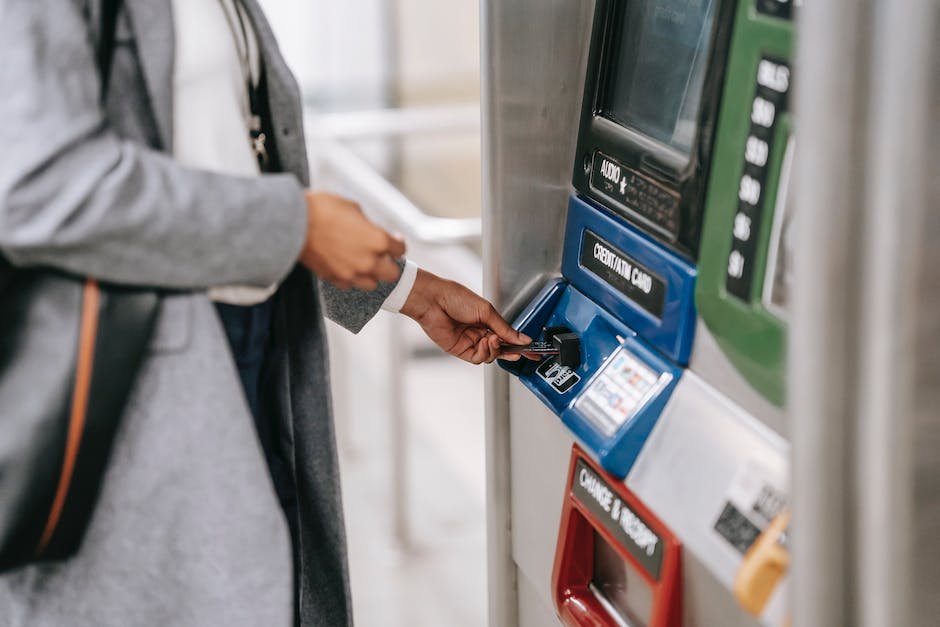Service dogs play a vital role in the lives of individuals with disabilities, offering assistance, companionship, and an unwavering sense of security. These remarkable animals undergo extensive training to perform tasks that allow their handlers to navigate the world with greater independence. However, while the training process is crucial, there is an equally crucial aspect that often goes unnoticed: the significance of public access training. In a world where service dogs encounter various environments, people, and scenarios on a daily basis, it is imperative that they are prepared not only to assist their handlers but also to adapt seamlessly to the ever-changing dynamics of the public sphere. Understanding the importance of public access training for service dogs is not only a matter of appreciation but also a testament to our commitment to inclusivity and equal opportunities for individuals with disabilities.
Table of Contents
- The Importance of Public Access Training for Service Dogs:
- – Enhancing Independence and Mobility for Individuals with Disabilities
- – Promoting Public Awareness and Understanding of Service Dogs
- – Strengthening the Bond between Service Dog and Handler
- - Ensuring Safe and Effective Navigation in Public Spaces
- – Collaborative Training Approaches: Building Partnerships for Success
- Q&A
- Concluding Remarks

The Importance of Public Access Training for Service Dogs:
Training service dogs goes beyond basic obedience. Public access training is an essential aspect of their education, enabling these remarkable animals to perform their vital tasks in public spaces. This type of training ensures that service dogs can navigate the various environments they may encounter while accompanying their handlers.
During public access training, service dogs are exposed to a wide range of scenarios, equipping them to remain calm and focused in even the busiest of places. They learn to ignore distractions such as loud noises, crowded areas, and other animals. By being exposed gradually and positively reinforced throughout their training, they acquire the necessary skills to be reliable in any public setting.
Public access training covers a multitude of valuable abilities for service dogs. Here are some key aspects that are incorporated into their training:
- Task execution: Service dogs are trained to perform a variety of specialized tasks to assist their handlers. Public access training ensures these tasks can be safely executed in public without causing any disturbances or posing risks to others.
- Etiquette and manners: Service dogs must demonstrate impeccable behavior at all times. They are taught how to politely greet individuals, avoid unwanted attention, and refrain from begging for food or engaging in nuisance behaviors.
- Safety and obedience: Service dogs undergo rigorous training to prioritize their handler’s safety. They are trained to respond swiftly to commands, maintain a calm demeanor, and obey leash manners to prevent any potential accidents or incidents.
- Public awareness: Educating the public about service dogs is another crucial aspect of public access training. Handlers are often approached by curious individuals, and it is important for both the public and service dog teams to understand proper etiquette and laws concerning service animals.
In summary, public access training is a critical component of a service dog’s training journey. It not only ensures their ability to perform tasks reliably but also instills appropriate behavior, safety, and public awareness. By investing in this training, we empower service dogs to provide assistance to their handlers with dignity and grace in any public setting they may encounter.

– Enhancing Independence and Mobility for Individuals with Disabilities
One of the most significant challenges faced by individuals with disabilities is the limitation it imposes on their independence and mobility. However, there are numerous ways in which we can enhance these aspects of their lives and provide them with the necessary support to live their lives to the fullest.
Here are some key strategies and initiatives that can contribute to enhancing independence and mobility for individuals with disabilities:
- Accessible Infrastructure: Developing infrastructure that is universally accessible can greatly improve the mobility of individuals with disabilities. This includes implementing ramps, elevators, and wider doorways in buildings, as well as ensuring accessible pathways and sidewalks in public spaces.
- Assistive Technologies: The advancements in assistive technologies have revolutionized the lives of many individuals with disabilities. From mobility aids such as wheelchairs and prosthetic devices to innovative communication devices and smart home systems, these technologies empower individuals to lead more independent lives.
- Education and Training: Providing access to quality education and training is crucial in enhancing independence and mobility. Offering specialized programs that address the unique needs of individuals with disabilities enables them to acquire the skills and knowledge necessary to navigate the challenges they may face.
- Support Networks: Establishing strong support networks is vital for individuals with disabilities to enhance their independence and mobility. Creating inclusive communities promotes social interaction and provides individuals with emotional support, while also fostering a sense of belonging.
By focusing on these strategies and initiatives, we can ensure that individuals with disabilities have equal opportunities to thrive, become more independent, and overcome the barriers that restrict their mobility in society. It is our collective responsibility to create an inclusive environment that celebrates diversity and empowers everyone to live their lives to the fullest potential.

– Promoting Public Awareness and Understanding of Service Dogs
Service dogs play a vital role in assisting individuals with disabilities, yet public awareness and understanding of their importance often falls short. The aim of this section is to shed light on the incredible work these dogs perform and educate readers about their unique abilities.
In order to promote public awareness, it is essential to address common misconceptions surrounding service dogs. These dedicated canines are not merely pets; they undergo extensive training to perform specific tasks that aid their handlers. It is important for people to understand that service dogs are working animals and should not be distracted or approached without permission.
One way to enhance understanding is by sharing inspiring stories of individuals and their service dogs. These heartwarming anecdotes showcase the life-changing impact these animals have on their handlers’ daily lives. Furthermore, featuring expert interviews and informative articles can provide valuable insights into the training process, the legal rights of service dog handlers, and the various types of service dogs that exist.
To engage a wider audience, visual content such as infographics and videos can be utilized to simplify complex concepts or statistics. Creating educational materials that are accessible and shareable on social media platforms can help raise awareness and reach individuals who may not have encountered these topics before.
Through concerted efforts, we can foster a society that recognizes and respects the crucial role of service dogs, ensuring that individuals with disabilities receive the support they need to live fulfilling lives.

– Strengthening the Bond between Service Dog and Handler
Building a strong bond between a service dog and their handler is not only crucial for the success of their partnership but also for their overall well-being. This bond goes beyond just a working relationship and becomes a deep connection based on trust, communication, and mutual understanding.
One of the ways to strengthen this bond is through regular training sessions. By engaging in consistent training exercises, both the service dog and their handler can develop a strong language of commands and cues, enhancing their communication skills. These sessions also provide an opportunity for the handler to understand the dog’s behavior patterns and anticipate their needs, fostering trust and reliability.
In addition to training, bonding activities can be incorporated into their daily routine. Going on leisurely walks, engaging in playtime, and spending quality time together help create a sense of companionship beyond their working duties. These activities not only bring joy and relaxation but also reinforce the emotional connection between the two.
Here are a few tips to further strengthen the bond between a service dog and their handler:
- Positive reinforcement: Consistently rewarding and praising the dog for good behavior helps build a positive association and encourages trust and cooperation.
- Regular grooming sessions: Taking care of the dog’s physical needs, such as grooming and brushing, can be a bonding experience for both the dog and their handler.
- Engage in joint relaxation exercises: Practicing deep breathing or relaxation techniques together helps create a sense of calm and deepens the connection.
- Take breaks and enjoy nature: Discovering new environments and enjoying nature during breaks not only provides mental stimulation for the dog but also strengthens the bond through shared experiences.
By investing time and effort into strengthening the bond between a service dog and their handler, a stronger partnership and a more fulfilling companionship can be achieved. Together, they can navigate the challenges and triumphs with a deep sense of trust and understanding.
– Ensuring Safe and Effective Navigation in Public Spaces
In order to ensure safe and effective navigation in public spaces, it is imperative to implement various strategies and measures that prioritize the well-being and convenience of everyone. One crucial step is to provide clear and visible signage throughout the area, guiding individuals to different destinations and highlighting any potential hazards. These signs can be strategically placed using contrasting colors and comprehensive symbols, ensuring maximum visibility for all visitors.
Moreover, the installation of appropriate lighting plays a vital role in maintaining a safe environment. Well-lit pathways and surrounding areas not only deter potential threats but also enhance overall visibility, reducing the risk of accidents and improving the navigation experience for everyone. Additionally, utilizing tactile paving can greatly assist individuals with visual impairments, helping them confidently navigate through public spaces. These textured surfaces are a simple yet effective solution, providing vital information through touch, such as direction changes, stairs, or potential obstacles.
To further enhance safety, periodic maintenance and inspection of all public spaces is essential. Regular checks and repairs must be carried out to ensure that walkways, ramps, and escalators are in good working condition, free from hazards such as loose tiles or cracks. Furthermore, implementing accessible seating areas and rest spots can greatly facilitate individuals with limited mobility, providing them with much-needed respite during their journey. Overall, by prioritizing safety and convenience in public spaces, we can create an inclusive and welcoming environment for all individuals to navigate through with ease.
– Collaborative Training Approaches: Building Partnerships for Success
Collaborative Training Approaches: Building Partnerships for Success
In today’s fast-paced and interconnected world, businesses are realizing the crucial importance of collaboration and partnership in achieving sustainable success. Collaborative training approaches have emerged as a powerful tool for organizations to foster teamwork, enhance communication, and drive innovation. By bringing together individuals from diverse backgrounds and areas of expertise, these approaches create an environment where ideas flow freely and solutions are developed collectively.
When implementing collaborative training approaches, it is essential to establish a foundation of trust and mutual respect among participants. By encouraging open dialogue and active listening, teams can harness the power of collective intelligence and tap into a wealth of ideas and perspectives. Building partnerships through collaborative training allows individuals to learn from one another, leverage their unique strengths, and foster a sense of shared responsibility for achieving common goals.
To facilitate effective collaboration, organizations can employ various training methods, such as interactive workshops, group exercises, and team-building activities. Through these hands-on experiences, participants learn to navigate challenges, resolve conflicts, and work harmoniously towards a common objective. These training approaches also offer opportunities for individuals to develop essential skills for effective collaboration, such as effective communication, negotiation, and conflict resolution.
By embracing collaborative training approaches, organizations can create a culture of partnership that permeates every aspect of their operations. This culture not only enhances employee engagement and productivity but also enables organizations to adapt rapidly to changing market dynamics and seize new opportunities. In an increasingly interconnected world, building partnerships for success through collaborative training approaches is not just a choice but a necessity for thriving in the business landscape of tomorrow.
Q&A
Q: Why is public access training important for service dogs?
A: Public access training is crucial to ensure that service dogs are well-behaved and can effectively assist their handlers in public settings. It helps familiarize them with various environments, distractions, and social interactions while maintaining their focus on their tasks.
Q: What are the benefits of public access training for service dogs?
A: Public access training enables service dogs to confidently navigate different venues, remain calm in crowded areas, and ignore tempting stimuli. It also helps foster positive public perception and acceptance of service dogs, creating a more inclusive society.
Q: What behaviors are typically covered in public access training?
A: Public access training focuses on teaching service dogs to exhibit proper leash manners, remain under control, refrain from begging or stealing food, and respond appropriately to commands in various public settings.
Q: How does public access training enhance the bond between service dogs and their handlers?
A: Through public access training, service dogs and their handlers develop a deeper level of trust and communication. Working together in real-life situations strengthens the bond, allowing handlers to rely on their dogs for assistance and support.
Q: How does public access training benefit the general public?
A: Public access training ensures that service dogs are well-behaved in public spaces, making them less likely to cause disruptions or pose any safety risks. This benefits the general public by creating a harmonious environment where everyone can go about their business without unnecessary disruptions.
Q: Are there any legal requirements for service dogs regarding public access training?
A: Laws may vary depending on the jurisdiction, but the Americans with Disabilities Act (ADA) in the United States requires service dogs to undergo proper training, including public access training, to ensure they can perform their tasks and behave appropriately in public places.
Q: Can service dogs in training access public places during their training period?
A: While service dogs in training are not granted the same legal rights as fully trained service dogs, they may still be allowed access to certain public places to gain experience and exposure. It is important to consult local laws or establishment policies for specific guidelines.
Q: How can public access training be obtained for service dogs?
A: Public access training is typically provided by professional trainers who specialize in service dog training. Many organizations and programs offer structured training courses that focus on obedience, behavior, and acclimation to public environments. Handlers can also work with trainers individually to tailor the training to their specific needs.
Concluding Remarks
As we close the chapter on this exploration of the importance of public access training for service dogs, one thing becomes astoundingly clear: the transformative power these remarkable canines possess. They not only serve as loyal guardians, guiding individuals with disabilities through the complexities of life but also as catalysts for shaping a society built on empathy and inclusivity.
The significance of public access training for service dogs cannot be overstated. It goes far beyond a mere ability to navigate bustling streets, crowded malls, or bustling airports. Instead, it is a harmonious dance of trust, training, and understanding between an extraordinary animal and its handler.
Imagine a world where every citizen instinctively knew how to accommodate the needs of these remarkable creatures. Where businesses, schools, and public spaces seamlessly opened their doors to welcome the companionship of a service dog, forging a path towards true accessibility. It is a tantalizing vision, one that is attainable through comprehensive public access training.
Through countless hours of disciplined preparation, service dogs are equipped with the skills necessary to navigate a kaleidoscope of people and environments. But let us not forget that their training is merely the foundation on which an even greater transformation unfolds. By integrating these incredible animals into our daily lives, we break down barriers, challenge prejudice, and foster a society that embraces diversity.
Service dogs possess the extraordinary ability to touch the hearts of strangers with their wagging tails and gentle souls. Their mere presence can turn skepticism into understanding, isolation into connection, and indifference into compassion. With each outing to the local grocery store, school, or workplace, these devoted companions act as ambassadors of hope and equality, teaching us the power of second chances and compassionate humanity.
So, as we reflect upon the importance of public access training for service dogs, let us usher in a future where they are universally acknowledged, respected, and embraced. Where people stand in awe not only of their exceptional abilities but also their tremendous capacity to inspire change.
May we strive for a world where service dogs become more than just diligent protectors and support systems for individuals with disabilities. Instead, let us work towards a society where these incredible creatures teach us the timeless values of kindness, understanding, and unconditional love.
In a world transformed by their presence, we will realize that service dogs are not just the heroes we need but also a living testament to the extraordinary heights of compassion humankind can reach.
As an affiliate, my content may feature links to products I personally use and recommend. By taking action, like subscribing or making a purchase, you’ll be supporting my work and fueling my taco cravings at the same time. Win-win, right?
Want to read more? Check out our Affiliate Disclosure page.